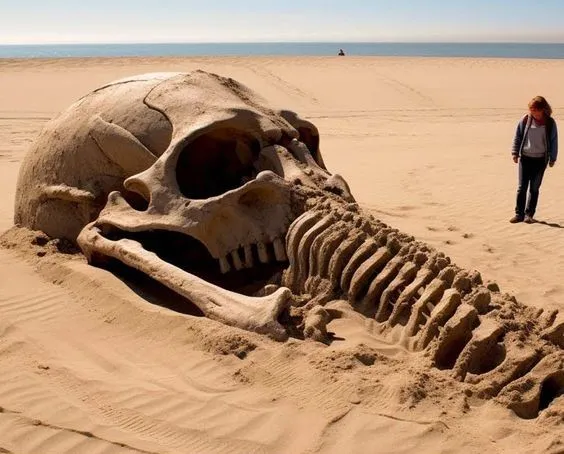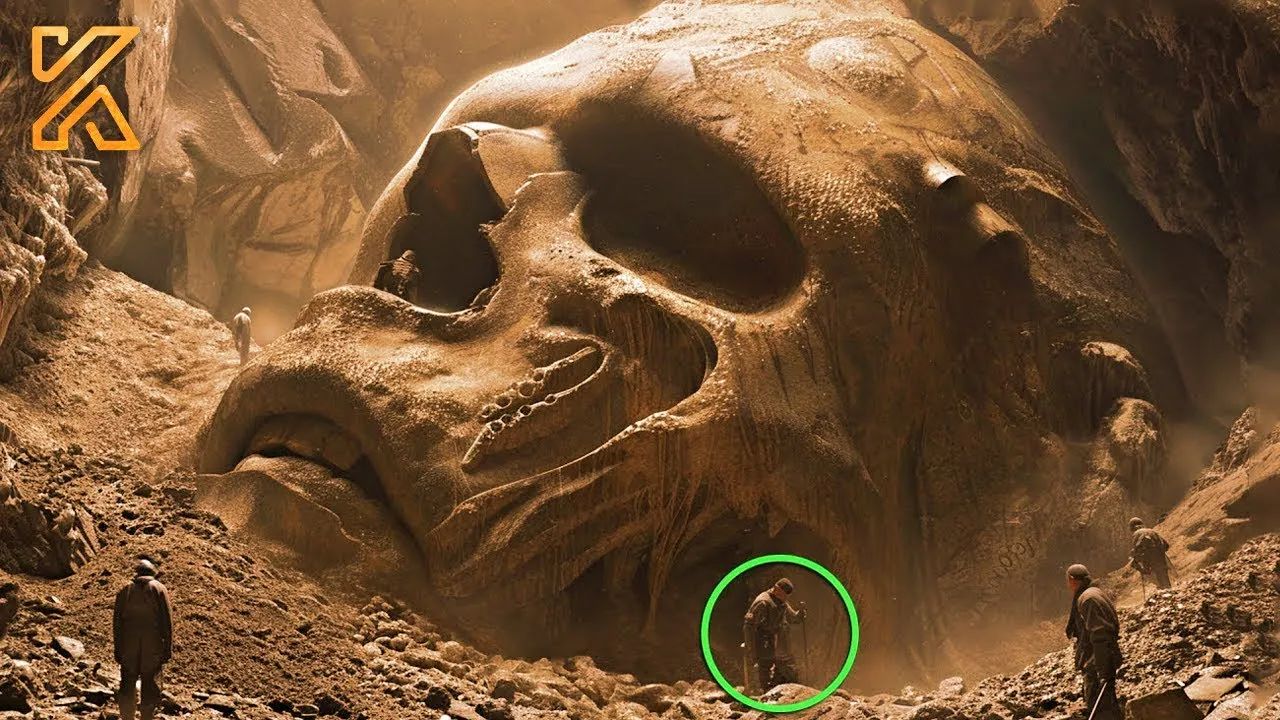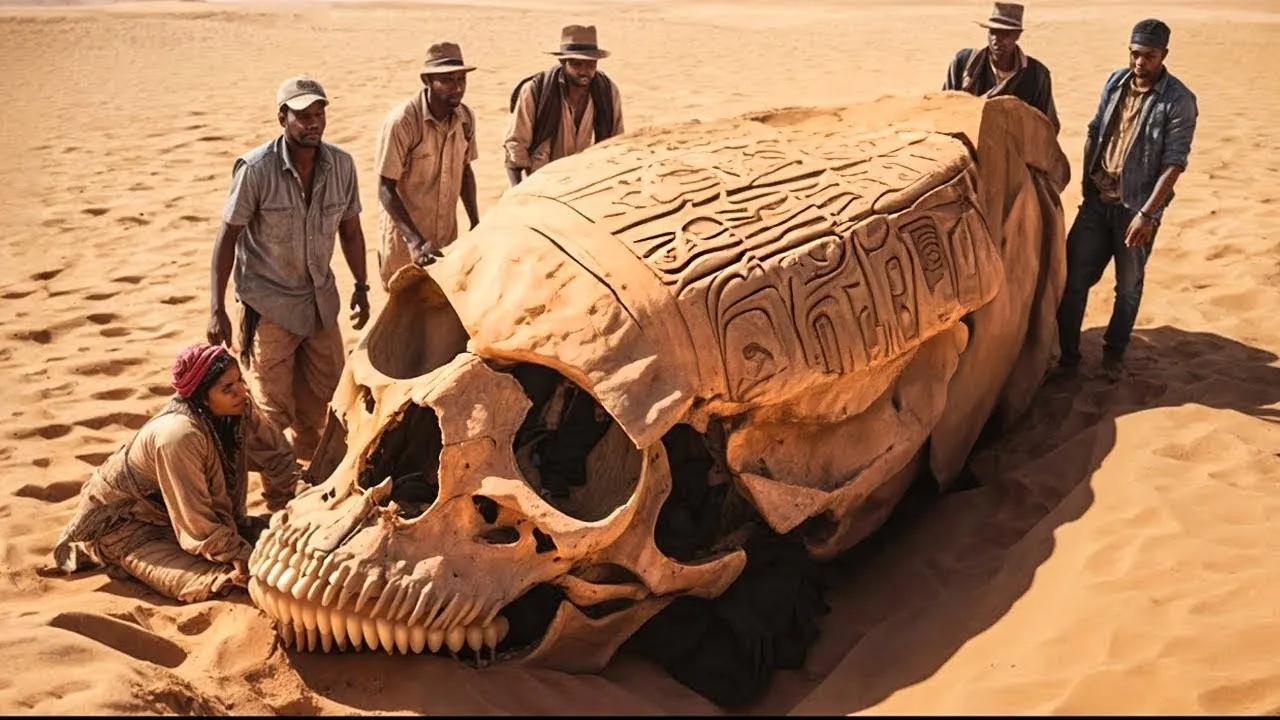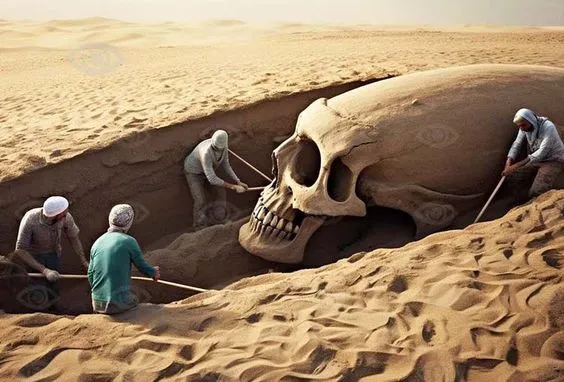In a discovery that has sent shockwaves through the archaeological community, a bizarre alien-like humanoid skeleton has been unearthed in a remote desert location, challenging our understanding of human history and sparking wild speculation about its origins.

The skeleton, unearthed during an excavation in a previously unexplored area of the desert, possesses an array of features that are distinctly different from those of any known human or hominid species. With an elongated skull, unusually large eye sockets, and a slender, almost skeletal frame, the remains bear a striking resemblance to the depictions of extraterrestrial beings popularized in science fiction and UFO lore.
Initial analyses suggest that the skeleton is ancient, though its exact age has yet to be determined through radiocarbon dating. The discovery site, located far from any known ancient civilization, adds to the enigma, raising questions about who—or what—this being might have been.

The discovery has left scientists both fascinated and bewildered. While some researchers are urging caution, suggesting that the skeleton may represent a previously unknown human ancestor or a rare genetic mutation, others are more open to the idea that it could be evidence of something far more extraordinary.

Dr. Elena Ramirez, a leading archaeologist on the team, described the find as “unlike anything we’ve ever seen before.” She noted that the skull’s structure is particularly unusual, with features that do not match those of any known hominid species. “It’s almost as if we’re looking at a different branch of the evolutionary tree—one that we didn’t know existed,” she remarked.

The discovery has inevitably fueled a wave of speculation, with theories ranging from the plausible to the fantastical. Some suggest that the skeleton could be evidence of an unknown species of early human or a long-lost civilization with distinct physical traits. Others are entertaining the possibility that the remains could be extraterrestrial in origin, potentially offering the first concrete evidence of contact with beings from another world.
The skeleton’s alien-like appearance has also reignited interest in ancient astronaut theories, which propose that extraterrestrial beings visited Earth in the distant past and influenced the development of human civilizations. Proponents of this theory argue that the skeleton could be a remnant of such encounters, left behind as evidence of an ancient connection between humans and extraterrestrial visitors.

As the investigation continues, researchers are eagerly awaiting the results of further tests, including DNA analysis and more precise dating techniques. These tests could provide crucial insights into the true nature of the skeleton and its place in the broader history of life on Earth.
Regardless of the outcome, the discovery has already shaken up the field of archaeology, challenging established narratives and opening up new avenues of exploration. Whether the skeleton proves to be a previously unknown human ancestor, a product of a rare mutation, or something even more extraordinary, it has undeniably added a new layer of mystery to our understanding of the past.

The alien-like humanoid skeleton found in the desert stands as one of the most intriguing archaeological discoveries in recent memory. As scientists continue to study this enigmatic find, the world waits with bated breath to see what new secrets it might reveal—and whether it could indeed force us to rewrite the history of our species.





